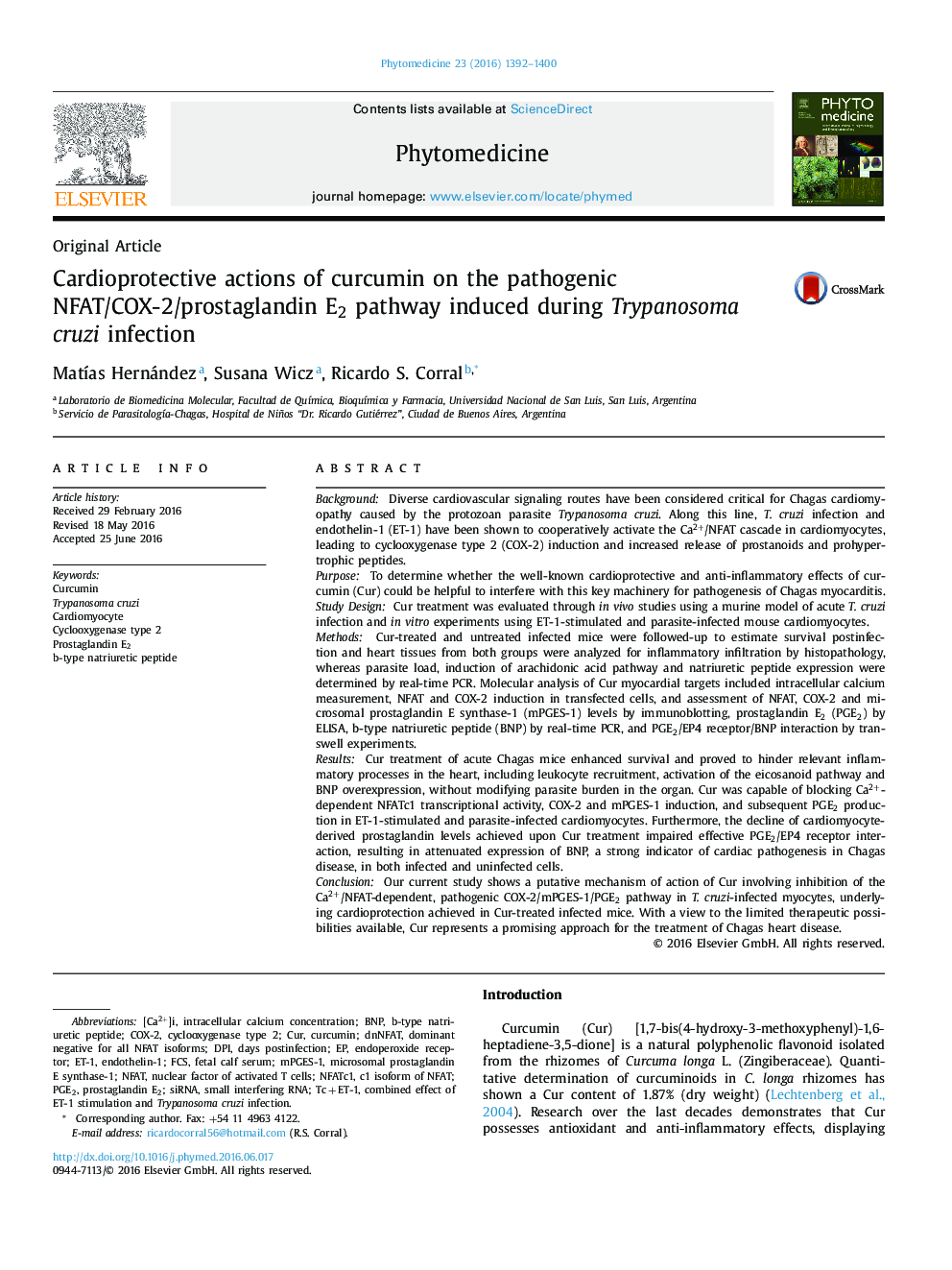| کد مقاله | کد نشریه | سال انتشار | مقاله انگلیسی | نسخه تمام متن |
|---|---|---|---|---|
| 5549390 | 1402870 | 2016 | 9 صفحه PDF | دانلود رایگان |

BackgroundDiverse cardiovascular signaling routes have been considered critical for Chagas cardiomyopathy caused by the protozoan parasite Trypanosoma cruzi. Along this line, T. cruzi infection and endothelin-1 (ET-1) have been shown to cooperatively activate the Ca2+/NFAT cascade in cardiomyocytes, leading to cyclooxygenase type 2 (COX-2) induction and increased release of prostanoids and prohypertrophic peptides.PurposeTo determine whether the well-known cardioprotective and anti-inflammatory effects of curcumin (Cur) could be helpful to interfere with this key machinery for pathogenesis of Chagas myocarditis.Study DesignCur treatment was evaluated through in vivo studies using a murine model of acute T. cruzi infection and in vitro experiments using ET-1-stimulated and parasite-infected mouse cardiomyocytes.MethodsCur-treated and untreated infected mice were followed-up to estimate survival postinfection and heart tissues from both groups were analyzed for inflammatory infiltration by histopathology, whereas parasite load, induction of arachidonic acid pathway and natriuretic peptide expression were determined by real-time PCR. Molecular analysis of Cur myocardial targets included intracellular calcium measurement, NFAT and COX-2 induction in transfected cells, and assessment of NFAT, COX-2 and microsomal prostaglandin E synthase-1 (mPGES-1) levels by immunoblotting, prostaglandin E2 (PGE2) by ELISA, b-type natriuretic peptide (BNP) by real-time PCR, and PGE2/EP4 receptor/BNP interaction by transwell experiments.ResultsCur treatment of acute Chagas mice enhanced survival and proved to hinder relevant inflammatory processes in the heart, including leukocyte recruitment, activation of the eicosanoid pathway and BNP overexpression, without modifying parasite burden in the organ. Cur was capable of blocking Ca2+-dependent NFATc1 transcriptional activity, COX-2 and mPGES-1 induction, and subsequent PGE2 production in ET-1-stimulated and parasite-infected cardiomyocytes. Furthermore, the decline of cardiomyocyte-derived prostaglandin levels achieved upon Cur treatment impaired effective PGE2/EP4 receptor interaction, resulting in attenuated expression of BNP, a strong indicator of cardiac pathogenesis in Chagas disease, in both infected and uninfected cells.ConclusionOur current study shows a putative mechanism of action of Cur involving inhibition of the Ca2+/NFAT-dependent, pathogenic COX-2/mPGES-1/PGE2 pathway in T. cruzi-infected myocytes, underlying cardioprotection achieved in Cur-treated infected mice. With a view to the limited therapeutic possibilities available, Cur represents a promising approach for the treatment of Chagas heart disease.
144
Journal: Phytomedicine - Volume 23, Issue 12, 15 November 2016, Pages 1392-1400